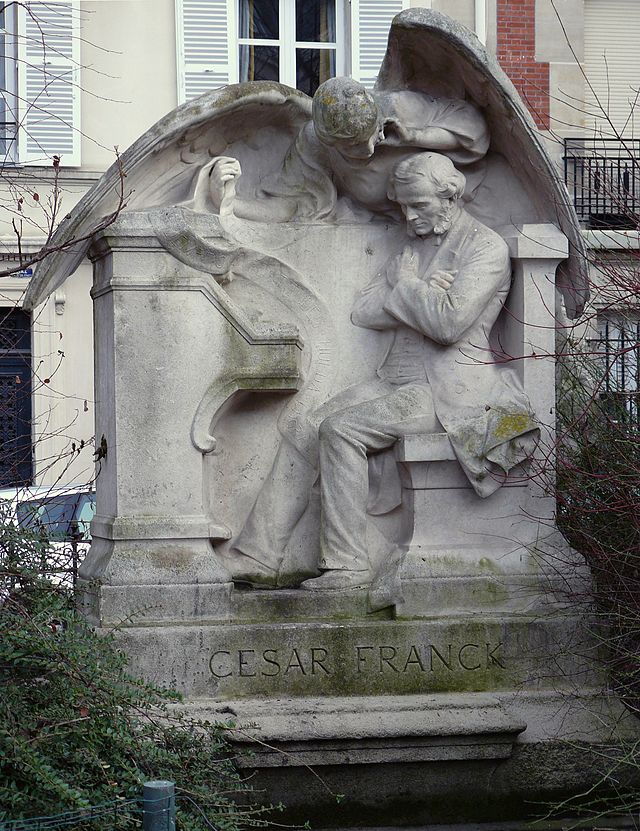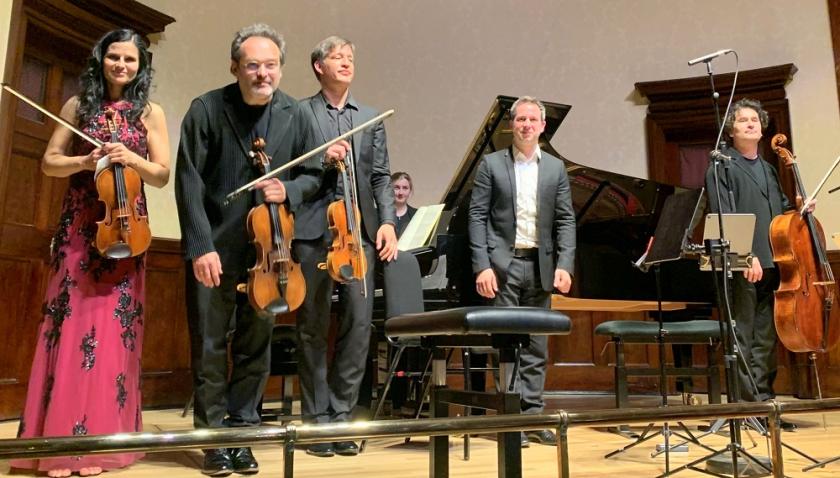In search of relatively rare fabulous beasts like César Franck’s Piano Quintet – given a fantastical performance last night – you often have to take in the ubiquitous Shostakovich specimen, the modest work of a master using simple means to his own creative ends that doesn’t bear too much repeated listening over a short space of time.
That won’t have been the case for most of the audience last night, who would have been rightly satisfied by the fire and poetry in the partnership of the Belcea Quartet – with a rare visitor as second violinist, the compelling Paweł Zalejski of the equally fine Apollon Musagète Quartet – and top French pianist Bertrand Chamayou. But the great can be the enemy of the very good. Just under two months ago, Elisabeth Leonskaja and the Jerusalem Quartet seemed to realise every perfection called for in the Shostakovich Piano Quintet. Chamayou’s tone didn’t hit as hard as Leonskaja’s in the brittle octaves, high register prominent, that make the piano writing unique; nor did the Belceas quite catch the eerie remoteness of the Jerusalems in the Fugue, nor the last degree of finesse in the unbearable-lightness-of-being final fade-out. Very much on the plus side was the balance of control and brute force at climaxes, and Chamayou’s inimitable way with the first theme of the finale.
 And so to the insanely demanding Franck Piano Quintet, a hippogriff with iridescent wings (pictured right: Lenoir's monument to Franck in the Place Samuel-Rousseau, Paris). It’s perhaps paradoxical that so pointedly abstract a work should give rise to so many images, but this performance urged them on us time and again. Paradox is also at work in the structure and the language, rooted in tradition and yet so often flying away from it. How bizarre, for instance, that the most sustained spate of chromatic intensity comes towards the end of the first movement, not in its development; and what a shock when sudden pauses get in the way of headlong charges.
And so to the insanely demanding Franck Piano Quintet, a hippogriff with iridescent wings (pictured right: Lenoir's monument to Franck in the Place Samuel-Rousseau, Paris). It’s perhaps paradoxical that so pointedly abstract a work should give rise to so many images, but this performance urged them on us time and again. Paradox is also at work in the structure and the language, rooted in tradition and yet so often flying away from it. How bizarre, for instance, that the most sustained spate of chromatic intensity comes towards the end of the first movement, not in its development; and what a shock when sudden pauses get in the way of headlong charges.
Chamayou, once past some problems with one of the Wigmore Steinways' habit of mushing on pedal release, guided the strings, and Corina Belcea achieved a true other-worldliness at the start of the Lento, its sentiment carefully articulated. For an encore as balm for battered spirits, nothing could be better than the sparkling Scherzo of Dvořák's A major Piano Quintet (interestingly, Leonskaja in both her appearances with distinguished quartets at the Wigmore this year featured the pensive poetry and heartease of the preceding "Dumka" movement as the encore). No matter if many in the audience didn’t know that a scherzo needs a trio and started applauding prematurely; that only made the beauty that contrasts with the dance emerge all the more magically in such masterly hands.















Add comment